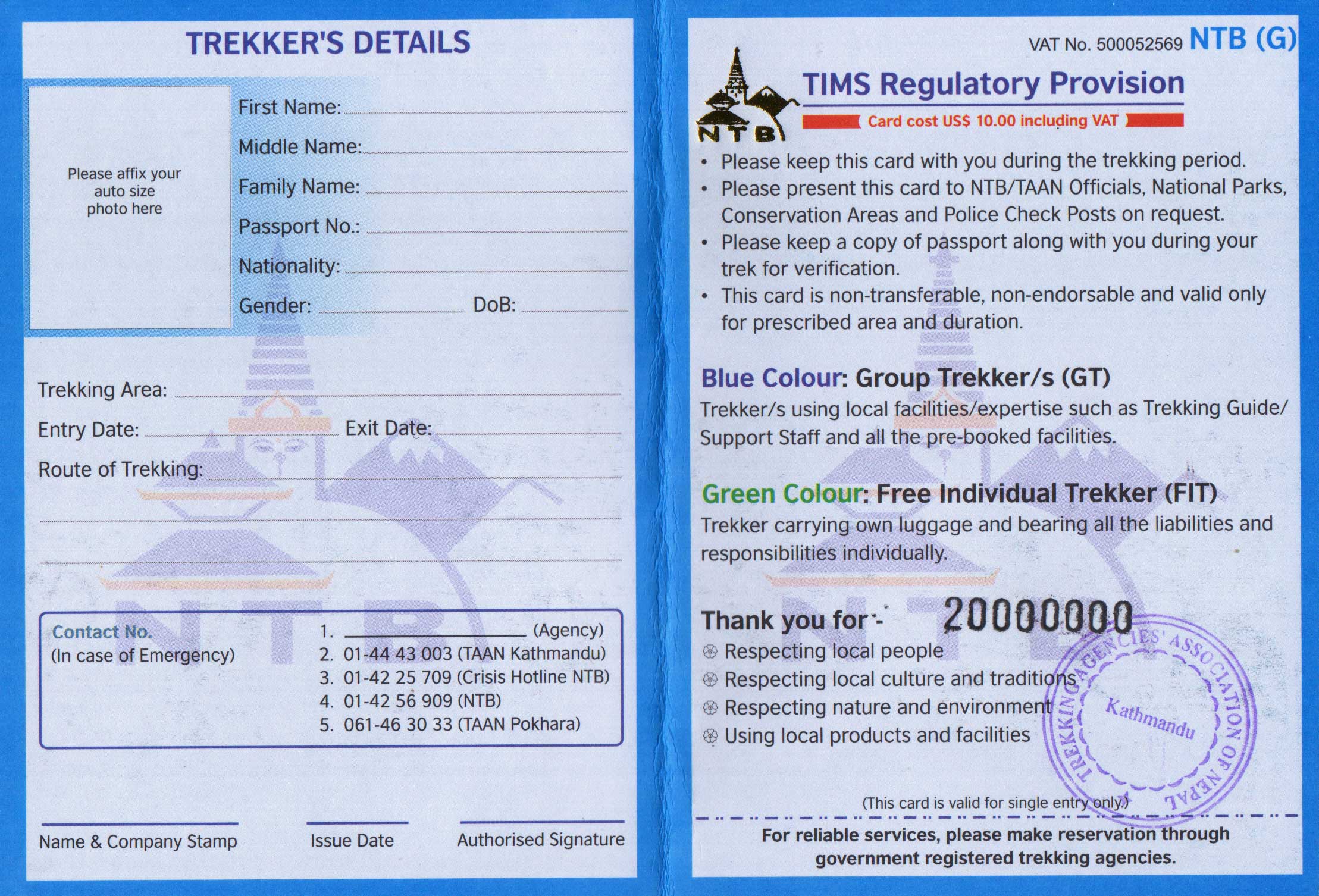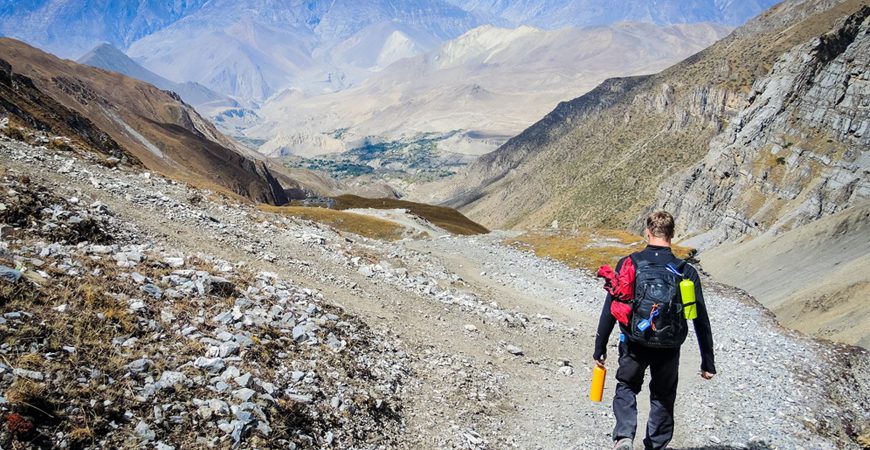Nepal bans solo trekking for tourists, guides mandatory from April 1. As per the latest development, Nepal has decided to go ahead with barring solo or independent trekkers from going trekking in Nepal starting from April 1, without the help of a guide.
This step has been taken to ensure the safety of trekkers, as there have been instances of trekkers being out of contact during their treks. This was recently announced by a senior official of Nepal Tourism Board. Mountain adventures in the Himalayan country will now only be possible under supervision.
The new rules apply to international tourists of all experience levels on treks in Nepal, such as the popular Annapurna Circuit, a 150-mile route that circles the Annapurna mountain range. Trekkers can still embark on solo hikes outside of national parks, such as around the city of Kathmandu.
It is important for travelers to check the latest information and regulations before planning a trip to Nepal, particularly with regards to trekking and other outdoor activities. It is always advisable to stay informed and follow the guidelines and regulations set by the local authorities to ensure a safe and enjoyable trip.
Last year, as Nepal’s tourism recovered from the COVID disruption, 19,415 solo trekkers registered.
About Solo Trekking in Nepal
Solo trekking is the practice of hiking or trekking alone, without the assistance of a guide or porter. Solo trekkers carry their own gear, food, and water, and navigate the trekking routes themselves. This can be a rewarding experience for some trekkers, as it allows for greater flexibility and independence.
However, solo trekking can also be risky, as trekkers may face challenges such as altitude sickness, unpredictable weather, and accidents.
It is important for solo trekkers to be well-prepared, physically and mentally, and to have the necessary skills and experience to navigate the trekking route safely. In some areas of Nepal, solo trekking is not allowed, and foreign tourists are required to hire a licensed guide or porter for safety and security reasons.
Why it is mandatory for foreign tourists
There are several reasons why it is mandatory for foreign tourists to hire a trekking guide or porter while trekking in Nepal:
- Safety: Trekking in Nepal can be challenging, particularly for those who are not familiar with the terrain and weather conditions. A trekking guide can provide essential safety support, including navigation, emergency first aid, and assistance in case of accidents or emergencies.
- Cultural experience: Trekking guides can provide valuable insights into local culture, customs, and traditions, helping travelers to gain a deeper appreciation and understanding of the country and its people.
- Environmental conservation: Trekking guides can help to promote responsible and sustainable tourism practices, including minimizing the impact on the environment and supporting local communities.
- Legal requirements: As of 1st April 2022, it is mandatory for foreign tourists to hire a licensed trekking guide or porter in Nepal. This is intended to improve safety and security for travelers, and to support the local tourism industry.
Overall, hiring a trekking guide in Nepal is essential for ensuring a safe and enjoyable trekking experience, while also supporting the local tourism industry and promoting responsible tourism practices.
Effort to Boost Employment Opportunities in Nepal
Due to a lack of employment opportunities at home, Nepal is expected to see nearly 1 million youths leaving the country for foreign employment this fiscal year ending mid-July.
The tourism industry is also struggling. Based on forward-looking scenarios for 2023, international tourist arrivals could reach 60 percent of pre-pandemic levels this year.
In 2019, before the Covid pandemic struck, Nepal received 1.19 million foreign tourists.
Among them, more than 300,000 were trekkers—with the Annapurna area receiving the highest 181,746 trekkers, followed by 57,289 trekkers in the Everest region, according to government statistics.
Since the issue of imposing mandatory guide rules was conceptualised, some tourists had complained about the restrictions on their freedom, while some others felt that the mandatory provision would make trekking safer.
In December 2008, Julian Wynne, a British tourist trekking solo in the Everest region, went missing. For Patricia Wynne, mother of Julian Wynne, it would be good for the Nepal government to enforce such rules.
In an email to the Post in 2012, Wynne wrote, “If guides had been made compulsory four years ago, my son would probably be with us today.”
How many permits needed in Nepal trekking
The number of permits required in Nepal depends on the specific activities and areas that a traveler plans to visit. Here are some common permits required for different activities in Nepal:
- Trekking Permits: Trekking permits are required for most trekking routes in Nepal, including the popular Annapurna Circuit, Everest Base Camp, and Langtang Valley. These permits are issued by the Nepal Tourism Board and are required for both foreign and domestic trekkers. The cost of trekking permits varies depending on the route and the duration of the trek.
- TIMS (Trekkers’ Information Management System) Card: The TIMS card is a registration card that is required for all foreign trekkers in Nepal. The card is issued by the Trekking Agencies’ Association of Nepal (TAAN) and helps to ensure the safety and security of trekkers. The cost of the TIMS card depends on the type of trek and the duration of the trek.
- National Park Permits: National park permits are required for many trekking routes in Nepal, as these routes pass through protected areas and wildlife reserves. The cost of the national park permit varies depending on the specific park and the duration of the trek.
- Climbing Permits: Climbing permits are required for all climbing expeditions in Nepal, including those to Mount Everest and other peaks. The cost of climbing permits varies depending on the peak and the duration of the expedition.
New Revised Rate for TIMs Card
Banning solo trekking for foreign trekkers, the board has also increased the price of the TIMS permit to 2000 rupees per person. Previously, people who traveled in large groups paid 1000 rupees for the TIMS card, while those who traveled alone paid a 2000.

TIMs Card
The TIMS permit for SAARC nationals has also increased to 1000 rupees. Diplomats are not charged for the card.
It is important to note that regulations and requirements can change over time, so it is always advisable to check for the most up-to-date information before planning a trip to Nepal. Travelers can consult with a licensed trekking agency or the Nepal Tourism Board for information on specific permits and requirements.
![]()

